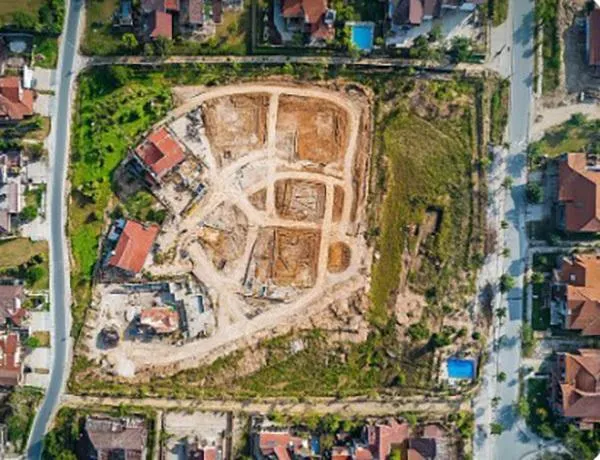
How Building Permits Are Impacting New Home Supply in Dallas–Fort Worth | Refind Realty DFW
How Building Permits in DFW Are Impacting New Home Supply
By Steven J. Thomas

Direct Answer
Building permits are the first sign of future home inventory.
In Dallas–Fort Worth, permit activity has slowed slightly in 2025 after several years of aggressive post-pandemic construction.
That means the number of new homes available in 2026 may tighten — creating selective competition for buyers and strong pricing stability for sellers.
Understanding building permit trends helps you predict which areas will see more supply and which will stay undersupplied.
Why Permits Matter
A “building permit” is more than paperwork — it’s a leading indicator of future housing inventory.
More permits → More new homes 6–12 months later.
Fewer permits → Fewer new listings, higher prices, and tighter buyer competition.
Builders base permit volume on land availability, demand forecasts, and construction costs — all of which fluctuate with mortgage rates and local regulations.
Current DFW Permit Trends (2025 Snapshot)
According to recent data from the Texas Real Estate Research Center and U.S. Census Building Permits Survey:
Permits in DFW Metro are down about 8–10% year-over-year (as of mid-2025).
Collin and Denton Counties still lead in total volume — representing over half of all new permits.
Southern suburbs like DeSoto, Waxahachie, and Midlothian are gaining share as land affordability improves.
Multifamily permits (apartments) remain elevated, while single-family permits have moderated.
📊 Translation: Builders are still active but more strategic — focusing on affordable price points, smaller footprints, and energy efficiency.
How This Impacts Buyers
Fewer new permits now means limited new-home inventory later — especially in high-demand price ranges under $500K.
What Buyers Can Expect
More competition for quick move-in homes in 2026.
Fewer incentives as supply tightens.
Rising build times if demand rebounds faster than supply.
🧭 Pro Tip: Start early. Explore active builder communities now at DFW New Construction Homes and get pre-approved before the next supply crunch.
How This Impacts Sellers
Slower permit growth is actually good news for existing homeowners.
Fewer new builds coming online means less direct competition for resale homes — particularly those in move-in-ready condition.
If you’re selling soon, emphasize:
Modern updates (buyers compare against new builds).
Energy efficiency or smart features.
Flexibility for closing or rate buydown assistance.
📈 Check your readiness using the Home Seller Score and see how your home competes with nearby new construction.
Regional Highlights: Where Builders Are Still Active
North Dallas Suburbs (Frisco, Celina, Prosper): High land costs but steady permit activity driven by schools and amenities.
Southern Dallas County (DeSoto, Glenn Heights, Cedar Hill): Fastest permit growth under $450K; strong value for move-up buyers.
Fort Worth / Parker County: Steady infill and affordable builder inventory continues.
Ellis County: Builders expanding south for lower land costs and infrastructure access.
These shifts show how growth corridors are expanding outward from core metro areas — a trend continuing into 2026.
The Builder Mindset in 2025
Builders are cautious but optimistic.
Many have adjusted pricing and product mix instead of halting projects entirely. Expect:
Smaller lot sizes.
Simplified floor plans.
Smart-home packages as standard features.
“Quick move-in” inventory replacing speculative overbuilding.
🎯 Tip for Buyers: Ask about “inventory homes” — ready-to-close new builds priced below comparable to-be-built options.
Economic Factors Influencing Permits
Mortgage Rates: Elevated rates near 6–7% slow buyer urgency and reduce builder starts.
Construction Costs: Material prices have stabilized but labor remains tight.
Zoning & Infrastructure: City-level permitting bottlenecks delay approvals in some suburbs.
Population Growth: DFW continues to add ~100,000+ new residents per year, sustaining long-term housing demand despite temporary slowdowns.
Investor Angle
Lower permit activity today can signal future rental opportunity.
When new supply lags population growth, rental demand often spikes.
Investors tracking permit trends can anticipate:
Which submarkets may tighten first.
When to acquire single-family rentals before prices rise.
Where short-term rental regulation creates or removes opportunity.
Use Neighborhood Reports to compare growth and permit patterns by ZIP code.
Looking Ahead: 2026 Forecast
Expect a gradual rebound in permits once interest rates ease and buyer confidence improves.
Until then, the market stays balanced to slightly undersupplied — supporting moderate price growth across DFW.
Builders are unlikely to overbuild as they did in prior cycles, which means:
Prices will remain resilient.
Demand will stay steady for well-located homes.
Buyers who act early can still access builder incentives before supply tightens again.
Conclusion
Building permit trends tell the real story behind DFW housing inventory.
While 2025 shows a modest slowdown in new permits, underlying demand remains strong — setting up a more competitive new-home market in 2026.
If you’re thinking about buying new or selling into this window, now is the time to plan strategically.
📲 Explore DFW New Construction Homes
📈 Get Your Home Seller Score
💬 Book Your Home Goals Consultation
Key Takeaways
DFW building permits are down ~8–10% year-over-year.
Collin and Denton Counties lead activity, while southern suburbs are growing fastest.
Lower permit volume means fewer new homes in 2026 — supporting current home values.
Builders are focusing on affordability, energy efficiency, and smaller footprints.
Buyers and sellers can both benefit by acting before supply tightens again.
Custom HTML/CSS/JAVASCRIPT